
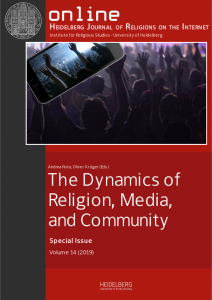 The current issue of the open-access Heidelberg Journal of Religions on the Internet (Vol. 14) is devoted to the impact of online religion on faith communities. There is much conjecture about how online involvement affects religious belonging and community but not much actual research about this relationship in all its variety of settings and contexts. An introductory article focuses on the theoretical aspects on the online-community connection, arguing that existing research has too often viewed Internet involvement as detrimental to religious community, leading to eventual secularization. The editors and contributors tend not to see such a secularizing effect, and instead posit a more dynamic, “entangled” process, where both online and real communities interact with and affect each other. This is clearly on view in an article about how monasteries have changed through their heavy investment in an online presence.
The current issue of the open-access Heidelberg Journal of Religions on the Internet (Vol. 14) is devoted to the impact of online religion on faith communities. There is much conjecture about how online involvement affects religious belonging and community but not much actual research about this relationship in all its variety of settings and contexts. An introductory article focuses on the theoretical aspects on the online-community connection, arguing that existing research has too often viewed Internet involvement as detrimental to religious community, leading to eventual secularization. The editors and contributors tend not to see such a secularizing effect, and instead posit a more dynamic, “entangled” process, where both online and real communities interact with and affect each other. This is clearly on view in an article about how monasteries have changed through their heavy investment in an online presence.
The online component of some monasteries has brought in financial revenue (through sales of books and artwork) as well as attracting more initiates —sometimes from far-flung places and unusual backgrounds—as a result of their personal searches on monasticism, bypassing the (often declining) role of local Catholic schools in forming such a vocation. The Internet, in effect, brings the world into the monastery, creating more connections with everyday life, but, on the downside, potentially threatens the quietude of the monastic community. Other articles in this issue include a look at how even Twitter users can create a new kind of community, using the case study of a British Muslim protest event; a study of how Jehovah’s Witnesses may show some discrepancies between personal and group views of their media and social media use; and an analysis of the way the multisite megachurch LifePoint, spanning three continents, uses the Internet both to promote official church teachings and activities and to build intimate and private communication between members. This issue can be downloaded at: https://heiup.uni-heidelberg.de/journals/index.php/religions/issue/view/2388
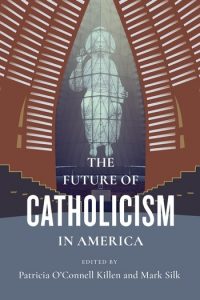 The Future of Catholicism in America (Columbia University Press, $35), edited by Patricia O’Connell Killen and Mark Silk, sets out to chart the uncertain and most likely pluriform future of Catholics in the U.S. The book’s introduction divides recent American Catholic history into three phases—“Vatican II Catholicism” (1959–1978), marked by a liberal turn to social action and more progressive theology; the “Reform of the Reform” (1978–2013), where orthodox Catholicism, often tied to conservative social policy, reframed the meaning of Vatican II under Pope John Paul II and Benedict XIV; and “Restoring the Spirit of Vatican II” (2013–present), where Pope Francis is seeking to resume the liberal reforms of the first era. The editors acknowledge that there are themes and issues running across those timelines, such as the sex abuse crisis, and suggest that pluralism and conflict rather than liberal or conservative consensus will mark American Catholicism in the future. They also point out that Catholic social science has often reflected these divisions in the church, with “little of its analysis [having] escaped in-house ideological struggles to control the narrative of the [Second Vatican Council] and to shape the meaning and interpretation of its outcome.”
The Future of Catholicism in America (Columbia University Press, $35), edited by Patricia O’Connell Killen and Mark Silk, sets out to chart the uncertain and most likely pluriform future of Catholics in the U.S. The book’s introduction divides recent American Catholic history into three phases—“Vatican II Catholicism” (1959–1978), marked by a liberal turn to social action and more progressive theology; the “Reform of the Reform” (1978–2013), where orthodox Catholicism, often tied to conservative social policy, reframed the meaning of Vatican II under Pope John Paul II and Benedict XIV; and “Restoring the Spirit of Vatican II” (2013–present), where Pope Francis is seeking to resume the liberal reforms of the first era. The editors acknowledge that there are themes and issues running across those timelines, such as the sex abuse crisis, and suggest that pluralism and conflict rather than liberal or conservative consensus will mark American Catholicism in the future. They also point out that Catholic social science has often reflected these divisions in the church, with “little of its analysis [having] escaped in-house ideological struggles to control the narrative of the [Second Vatican Council] and to shape the meaning and interpretation of its outcome.”
The rest of the contributions reflect the theme of conflict and pluralism, with even the chapters on Latinos in the American church holding out the hope that they can transcend the liberal-conservative divide through both their evangelistic fervor and participatory style with its social justice thrust. Other noteworthy chapters include a look at how the different forms of ecumenism—first between Catholics, mainline Protestants, and Jews on social action and then in the 1990s between evangelicals and Catholics on prolife and culture war issues—often constituted the church’s public face, though these shifting alliances and networks have helped to fragment and weaken Catholic identity; a look at how worship itself has become a contested rather than a common ground for Catholics, vividly seen in how the “old” Latin Mass has seen growing demand, not only from elderly but from younger Catholics as well; and a study of the public face of Catholicism by sociologist Richard Wood, which presents a case study of how different Catholic organizational actors are able to transcend narrow interests, as was seen in the health care debate of 2009–2010 (even if the sex abuse crisis has shown the opposite tendency, especially in the case of the bishops). The editors conclude with several forecasts about the probable American Catholic future, which include the unlikely return of the church to a well-defined subculture; the likelihood of a smaller church, as disaffiliation continues and a gap grows between conservative priests formed in the John Paul II era and more liberal people in the pews; the emergence of a more ethnically diverse church; and the continuation of disconnection and fragmentation.
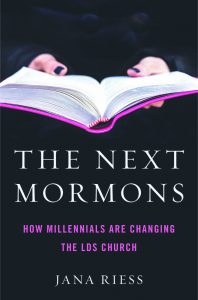 The Next Mormons (Oxford University Press, $29.95), by Jana Reiss, paints a picture of young Latter-Day Saints that is somewhat similar to portrayals of young members in other religious traditions—conflicted between allegiance to their communities and their lives in a pluralistic and individualistic culture. Based on a 2016 Next Mormons Survey conducted with political scientist Benjamin Knoll (several findings of which have been reported in RW), the book also fleshes out the statistical analysis with Reiss’ engaging historical and contemporary accounts and vignettes of young LDS members and their place in the church. She finds that the church has retained its young members to a greater degree than have other religious bodies, but she soberly looks at signs of diminished vitality and loyalty from the Millennial generation.
The Next Mormons (Oxford University Press, $29.95), by Jana Reiss, paints a picture of young Latter-Day Saints that is somewhat similar to portrayals of young members in other religious traditions—conflicted between allegiance to their communities and their lives in a pluralistic and individualistic culture. Based on a 2016 Next Mormons Survey conducted with political scientist Benjamin Knoll (several findings of which have been reported in RW), the book also fleshes out the statistical analysis with Reiss’ engaging historical and contemporary accounts and vignettes of young LDS members and their place in the church. She finds that the church has retained its young members to a greater degree than have other religious bodies, but she soberly looks at signs of diminished vitality and loyalty from the Millennial generation.
She sees the Millennials as being on the cutting edge of progressive views in the church regarding homosexuality (doubling from 24 percent in favor of the inclusion of homosexuals in the church in 2007 to 48 percent in 2016), changing gender roles, politics (Millennials are almost as likely to be Democrat as they are to be Republican), and creating a place for singles (because of the decline of marriage in this generation). The author devotes an interesting section to former Mormons and notes that Millennial “apostates” are actually more likely to retain a belief in God than older ones, even if their likelihood of returning to the fold diminishes the longer they stay out of the church. Reiss concludes that even though young LDS members have maintained strong involvement (especially among women, who now have greater freedom to join mission work), such loyalty can be unsettled if the church doesn’t revive its genius of balancing orthodoxy with adaptation to its surrounding culture.
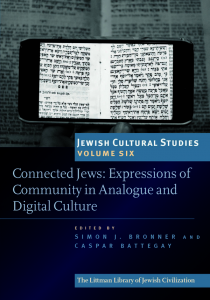 In the book Connected Jews (Oxford University Press, $37.50), edited by Simon J. Bronner and Caspar Battegay, contributors cover a wide range of case studies around the world to show both old and new ways that international Jewry is connected and how these affect Jewish identity and affiliation. The wide net thrown over sources of Jewish connectivity includes the Jewish popular music scene, bringing together secular and religious Jews, Jewish joke-telling through the Internet, and popular Israeli TV shows, such as BeTipul, about a Jewish psychoanalyst, and the way they are adapted to American television. In dealing with Jews and social media, the introduction makes it clear that the Internet can both connect Jews and divide them, serving as a source of apostasy and distraction from the faith, as reflected in Hasidic and ultra-Orthodox leaders’ efforts to discourage Internet and cell phone use among their followers. Yet Hasidic groups such as Chabad have also been in the front ranks of those using social media for outreach and connecting members, even if they use sophisticated methods to filter out objectionable material. The chapter on “cyber-shtetls” is particularly interesting, dealing with the online recreation of historic communities of Jews destroyed by the Holocaust.
In the book Connected Jews (Oxford University Press, $37.50), edited by Simon J. Bronner and Caspar Battegay, contributors cover a wide range of case studies around the world to show both old and new ways that international Jewry is connected and how these affect Jewish identity and affiliation. The wide net thrown over sources of Jewish connectivity includes the Jewish popular music scene, bringing together secular and religious Jews, Jewish joke-telling through the Internet, and popular Israeli TV shows, such as BeTipul, about a Jewish psychoanalyst, and the way they are adapted to American television. In dealing with Jews and social media, the introduction makes it clear that the Internet can both connect Jews and divide them, serving as a source of apostasy and distraction from the faith, as reflected in Hasidic and ultra-Orthodox leaders’ efforts to discourage Internet and cell phone use among their followers. Yet Hasidic groups such as Chabad have also been in the front ranks of those using social media for outreach and connecting members, even if they use sophisticated methods to filter out objectionable material. The chapter on “cyber-shtetls” is particularly interesting, dealing with the online recreation of historic communities of Jews destroyed by the Holocaust.
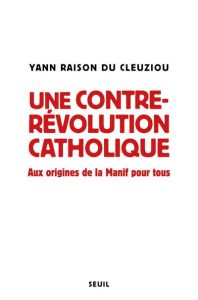 A new book (in French) by Yann Raison du Cleuziou (University of Bordeaux), Une Contre-Révolution Catholique: Aux Origines de la Manif pour Tous (Seuil), focuses on the important segment of practicing Catholics in the French church. Their religious faithfulness is strongly based on family life, and they are successful in ensuring the transmission of faith to successive generations, having often been educated at Catholic schools themselves. They interact within various networks with their own media and intellectuals, but they are far from being homogeneous. Researchers should pay attention to this milieu, since it is proving influential in French Catholicism’s current developments, both religiously and politically. With the numerical decline of French Catholicism, these practicing Catholics have come to play a more important role. Du Cleuziou finds that 1.8 percent of French Catholics attend Mass every Sunday, and the percentage only goes up to 4.5 percent if all who attend Mass at least once a month are counted. After a heavy decline in church affiliation and religious practice, the future of the Roman Catholic Church in France is now strongly linked to this small but active minority of those remaining faithful. Among those who go to Mass every week, some 30 percent are what are described as “observant” Catholics. While most accept the Second Vatican Council, they are more conservative than other Catholics on liturgical, theological, moral and political issues, and many of the younger practicing Catholics share such inclinations.
A new book (in French) by Yann Raison du Cleuziou (University of Bordeaux), Une Contre-Révolution Catholique: Aux Origines de la Manif pour Tous (Seuil), focuses on the important segment of practicing Catholics in the French church. Their religious faithfulness is strongly based on family life, and they are successful in ensuring the transmission of faith to successive generations, having often been educated at Catholic schools themselves. They interact within various networks with their own media and intellectuals, but they are far from being homogeneous. Researchers should pay attention to this milieu, since it is proving influential in French Catholicism’s current developments, both religiously and politically. With the numerical decline of French Catholicism, these practicing Catholics have come to play a more important role. Du Cleuziou finds that 1.8 percent of French Catholics attend Mass every Sunday, and the percentage only goes up to 4.5 percent if all who attend Mass at least once a month are counted. After a heavy decline in church affiliation and religious practice, the future of the Roman Catholic Church in France is now strongly linked to this small but active minority of those remaining faithful. Among those who go to Mass every week, some 30 percent are what are described as “observant” Catholics. While most accept the Second Vatican Council, they are more conservative than other Catholics on liturgical, theological, moral and political issues, and many of the younger practicing Catholics share such inclinations.